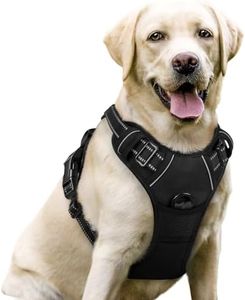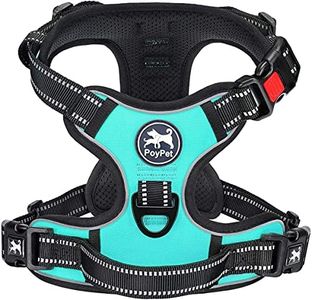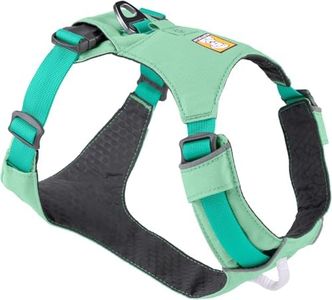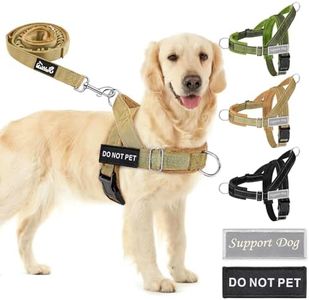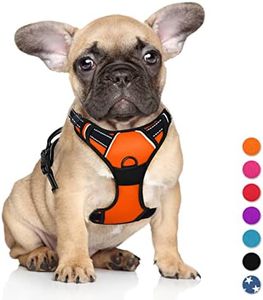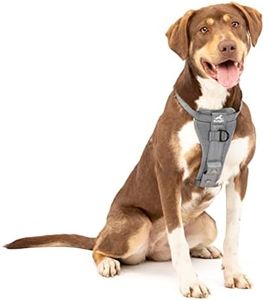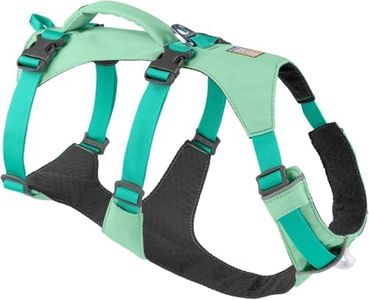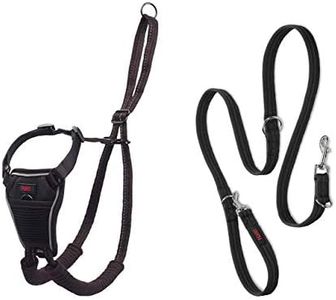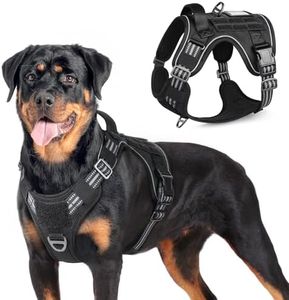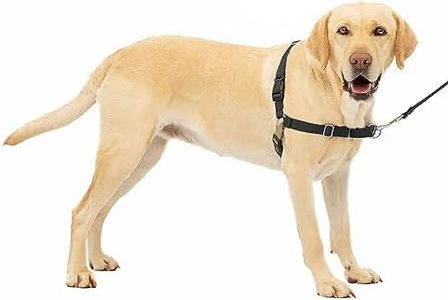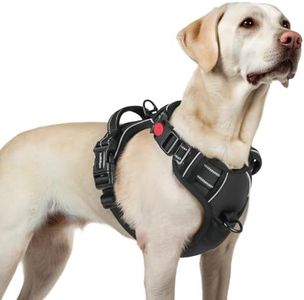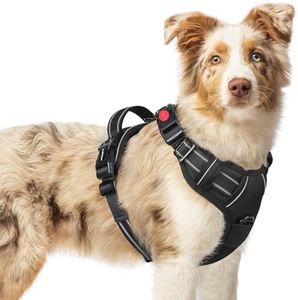We Use CookiesWe use cookies to enhance the security, performance,
functionality and for analytical and promotional activities. By continuing to browse this site you
are agreeing to our privacy policy
10 Best Anti Pull Dog Harness
From leading brands and best sellers available on the web.Buying Guide for the Best Anti Pull Dog Harness
Choosing the right anti-pull dog harness is an important decision for both your dog's comfort and your own ease while walking. The aim of these harnesses is to discourage pulling without causing harm, and they come in various designs with different features. It's important to consider both your dog's size and temperament, as well as your preferred walking style, when selecting a harness. Understanding the key specifications will help you find a harness that keeps your pet safe, comfortable, and well-behaved during walks.Harness TypeThe harness type refers to the design of the harness and how it sits on the dog's body. Common types include front-clip, back-clip, and dual-clip harnesses. Front-clip harnesses have the leash attachment on the front of the chest, which helps redirect your dog when it pulls. This type is best for strong pullers or if you're training your dog not to pull. Back-clip harnesses have the leash attachment on the back, which is easier to put on and take off and provides more comfort, but can encourage pulling in very strong dogs. Dual-clip harnesses offer both options for flexibility. Choose a type based on your dog's pulling behavior and the level of control you need.
Fit and AdjustabilityFit and adjustability refer to how well the harness can be tailored to your dog's body. An ill-fitting harness can cause discomfort or chafing, while too loose a fit may allow the dog to slip out. Harnesses often have multiple adjustable straps at the neck, chest, and sometimes belly. For small or growing dogs, or breeds with unique body shapes, more points of adjustment allow for a custom fit. Always measure your dog and use the manufacturer's sizing guide. The right choice is a harness you can snugly adjust, ensuring it won’t slip but also isn’t too tight.
Padding and MaterialPadding and material are important for comfort and durability. Padded harnesses help distribute pressure across the chest and prevent rubbing, which is especially beneficial for strong pullers or sensitive dogs. The material should be strong enough to handle pulling but also breathable and soft for your dog’s comfort. If your dog has sensitive skin, opt for harnesses with extra padding and soft linings. Think about the climate and whether your dog will wear the harness for long walks—lightweight, breathable materials are better for warm weather.
Ease of UseEase of use covers how simple it is to put on and remove the harness. Harnesses with clips or buckles that are easy to reach make the process less stressful for both you and your dog. Step-in harnesses can be great for dogs that don’t like things going over their heads, while overhead harnesses may provide a more secure fit. If your dog is very active or impatient, choose a harness style that can be put on quickly.
Leash Attachment PointsSome harnesses have multiple leash attachment points, like one at the chest and one at the back. This is useful for training or providing flexibility in how you manage your walk. For anti-pull training, the front attachment is most useful, but having both allows you to switch as your dog becomes better trained. If you only walk your dog in controlled environments, a back attachment may suffice. Consider your training goals and typical walking scenarios when choosing between single and multiple attachment points.
Visibility FeaturesVisibility features like reflective strips or bright colors improve safety during early morning or evening walks. Reflective material makes your dog more visible to drivers and other pedestrians. If you often walk your dog in low-light conditions, look for harnesses with built-in reflective features or in neon colors. This ensures you and your dog are visible and safe at all times.
